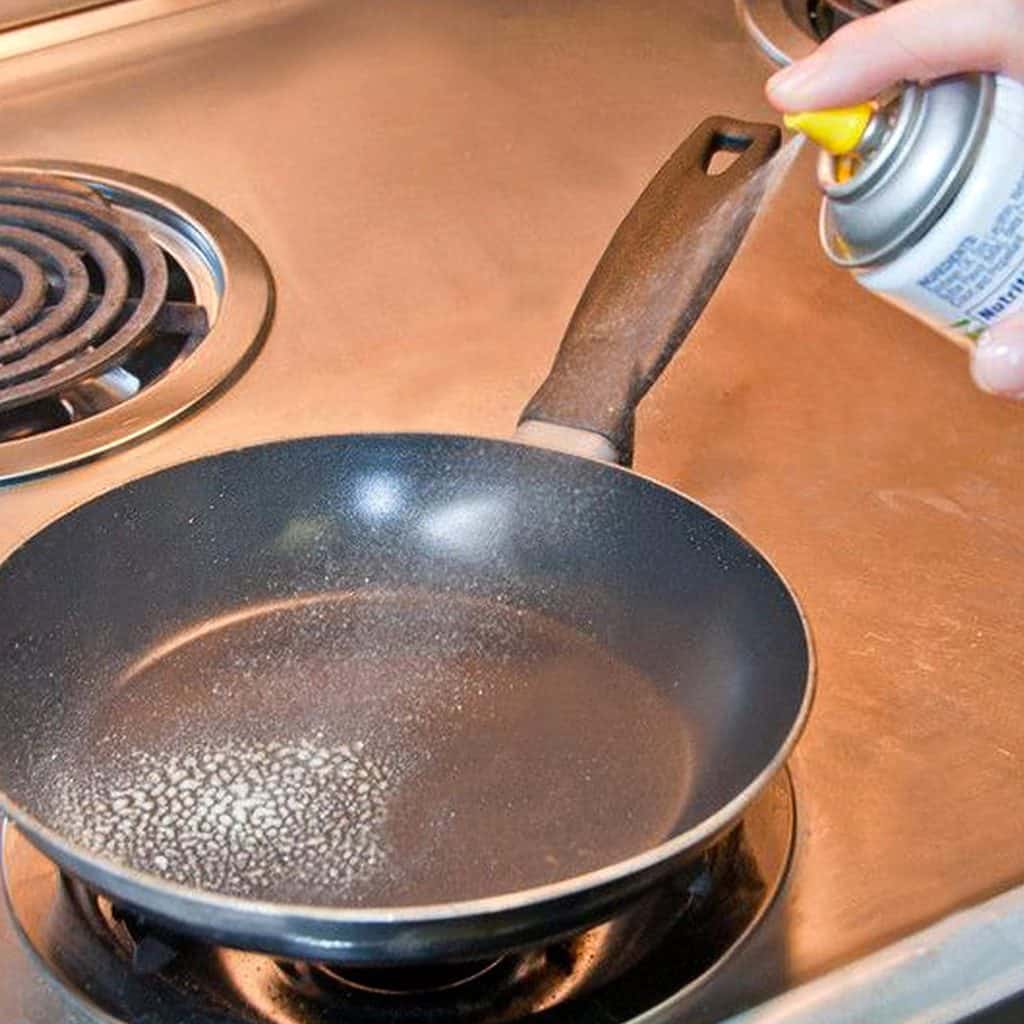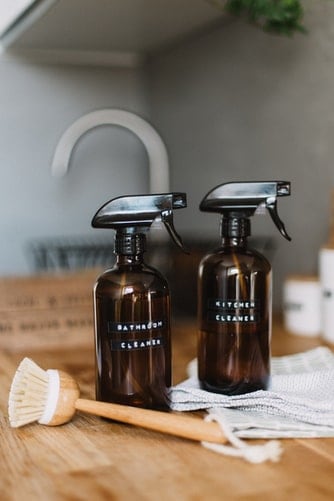- Cooking Spray is naturally gluten free.
- Cooking Spray is oil mixed with other chemical components that are packed in a spray bottle.
- Oil and Lecithin are base integrants of a Cooking Spray.
- Cooking Spray makes kitchen management effortless and convenient.
Is PAM cooking spray gluten free? The cooking spray is one such incredible recent invention that makes your everyday task much more manageable.
Gone are the days when you would have to search the oil brush and apply the cooking lubricant at all the nooks and corners of your pan. But, is it gluten free?
This oil spray reaches every single spot, which makes it a must-have in every kitchen. Although it is such a fantastic time-saving product, there are some downsides to it which are frequently pointed out.
Is cooking spray gluten free? This question has been a hot topic ever since this spray has been introduced. It needs clarification, which is why we are here.
Are you ready to unfold the truth? Then, let’s begin our journey deep down the can of this cooking spray!
Is PAM cooking spray gluten free? What are the ingredients used in the cooking spray?

Using oil or butter makes it more convenient to clean the dish after the cooking is done. This conventional method of applying butter or oil to your waffle pan prevents the waffles or other ingredients from sticking to it.
This cooking hack was introduced to us by our mothers and grandmothers, who are proficient in this field. However, with advancements in science and technology, the food industry is also witnessing new products with each passing day.
The cooking spray is a new addition to every pantry that is an excellent substitute for conventional cooking oil or butter. It is a can that contains oil, which is an essential cooking ingredient, and many other chemical compounds are added to it that makes it so useful.
It makes the kitchen management more effortless. Cleaning and cooking become a breeze when this magical can is around you.
This cooking essential contains oil, which helps in lubrication to effortlessly flip, slide and fry the food without struggling with the stuck particle.
The next ingredient is Lecithin, which emulsifies the fat and helps the oil do its job.
Besides, some propellants are also used to prepare this spray. The spray coats the dish evenly, and no area is left uncoated.
These propellants include Nitrous Oxide, Propane, Carbon Dioxide, food-grade alcohol, etc. Dimethyl Silicone is another product that is used in these sprays.
This chemical acts as an anti-foaming agent, and the oil doesn’t dispense as a foam. Instead, it oozes out as mist. When all these constituents are combined, a can of cooking spray is produced.
Let us take you deeper to explore the two primary ingredients used in this spray to understand better.
1) Oil
The oil is the primary component of any cooking spray. It acts as a lubricant and prevents the food particles from sticking to the cooking surface.
Canola oil is most commonly used in these aerosol sprays, but other edible oils like Olive oil, Sunflower oil, Mustard oil, Coconut oil, etc., are also used.
The oil is quite thick in texture and spraying it to apply a thin layer on the cooking dish is quite challenging. To make it effortless, water is added to the oil to become thin and easy to spray.
Hence, when you spray it on the cooking pan or any other surface, it evenly coats it and saves you from the trouble of scraping off the residues later and cleaning the pan.
2) Lecithin
Since oil is used in its diluted form in the cooking spray, Lecithin becomes an essential component that has to be added.
In your high-school science, you must have studied that oil and water don’t mix. The water settles at the bottom while the oil floats on top.
Did you get puzzled when we talked about mixing the two in the section above? You might have because technically, oil cannot be diluted with water. Lecithin makes its entry here and solves the mystery.
It is an emulsifying agent that is also present in the egg yolk. This agent is used to emulsify oil and mix it with water so that it becomes diluted.
A cooking spray without Lecithin will give out a thick oily layer, which is not the spray’s ideal property. Hence, Lecithin is used to achieve the thin layer.
Is Cooking Spray Gluten free in general?

Here comes what you were waiting for! Many people wonder if the ingredients used in cooking spray have gluten in them or the entire mix is gluten-free? Get ready to see the truth behind the mystery.
Since this spray significantly contains oil and Lecithin in large amounts, the possible gluten content will be imparted by these two ingredients only. Other contents, like Propellants and Dimethyl Silicone, have no gluten.
Gluten is a protein that does more harm to the human body than good. It is found in grains like Barley, Wheat, Rye, etc.
The worst thing is that those suffering from Celiac are more vulnerable to food rich in gluten or have gluten traces. Their health can degrade drastically if they have a single bite of gluten-containing food items.
Hence, such people always keep a check on whatever goes into their buccal cavity. Cooking Spray is used in every dish, so this cooking essential is often subjected to several scrutinizations.
Are basic components of Cooking Spray Gluten free?
If you look at the significant components, oil is naturally gluten-free since it is extracted from natural sources like fruits, flowers, and vegetables. These oils are used for cooking and hence safe if used without processing it.
There is always a possibility of cross-contamination while processing these edible oils, making them more vulnerable to contamination and containing gluten traces.
Always check the label while purchasing any cooking spray variant.
Though the natural oils are gluten-free, sometimes the factories add wheat flour to add flavor and make it more suitable for use. This addition makes the mix entirely gluten-rich because wheat is a potential source of gluten.
If you check the label, you can decide whether you should purchase that cooking spray or not. If the tag has the term “gluten free,” only then should you make a purchase.
Moving on to another crucial ingredient of these oil sprays, Lecithin, is entirely gluten free.
This emulsifier is extracted from a natural source, soy. The Soybean does not contain gluten, which means that Lecithin is entirely free from the protein.
If you examine this product from its origin, a cooking spray is entirely gluten-free.
However, it may be subjected to cross-contamination in factories with other gluten-containing products and contain traces. To be entirely sure about your spray, ensure that you check the label once.
How can I make my own cooking spray?

If you are worried about the possible gluten content in the cooking sprays sold in the market, you can always prepare one at home that is natural and 100 percent gluten free.
To make the cooking spray at home, you need to follow the steps listed below.
To start with the preparation, you will first need some ingredients that are essentially used.
Ingredients
- One part of the water,
- One part of the oil that you prefer,
- A spray bottle that is easy to use.
Once you have these three raw materials ready, it is time to start preparing the homemade cooking spray.
Instructions
- Add the entire portion of oil and water to the spray bottle that you have decided to use.
- Put the lid of the bottle and give the mix a good shake.
Your homemade cooking spray is ready to use!
If you are worried about the emulsifier that has not been used, you need not because you can shake the bottle thoroughly before using the spray to coat your cooking vessel.
Since you have made this cooking spray at home, it is entirely natural and has no gluten in it. Your worries about the presence of gluten are entirely eradicated with this spray, which you can always use.
How does the cooking spray taste like?
These sprays’ primary aim is to prevent the food from sticking to the vessel’s surface, which is used for cooking it.
Since it has oil, Lecithin, water, Propellants, and anti-foaming agents mixed, it might taste like mild Olive oil or butter.
Other than this taste, cooking sprays don’t have any prominent taste of their own. Their job is to make a smooth base for the food and not change its taste.
If you find the taste a little different, you should check its expiry date or discard it.
What are the alternatives?
If you don’t like the presence of chemicals in your oil, you can switch to another potent alternative to this spray.
This spray is meant to provide a calorie-free diet to you. Using butter and cooking oil will do the opposite.
The best alternative is Canola Oil because it is light and healthy. The only thing you need to do is apply a tiny amount of canola oil on the cooking surface using a paper towel to get the thin layer of lubrication and prevent sticking.
Why is cooking spray widely preferred over cooking oils?
There are several reasons why cooking oil is less preferred than cooking sprays.
When the oil spray wasn’t around, people used butter and oil to grease their cooking dishes so that the food doesn’t stick on the surface and is easy to flip and slide.
Though this cooking lubricant was essentially required for cooking food, and there were no alternatives, people had to consume the unnecessary fat these oils had. Moreover, the texture made the food more sticky and unhealthy to eat.
While small amounts of fat are required for keeping the body healthy and functional, too much of it can have dire consequences.
Edible cooking oils have Omega 2 fatty acids that help you stay fit. These acids treat all other ailments of your body and maintain the system very well.
Though there are several benefits of consuming oil, unknowingly, we humans consume it more than the prescribed amount. This excessive consumption leads to other health risks that you never thought of.
Cooking sprays only coat the utensil such that the food can be slid and flipped to the other side.
The oil in it is diluted, and hence, your food cooked using the cooking spray contains the adequate amount of fat that needs to go inside your system.
These sprays provide you calorie-free food that doesn’t have too much fat and doesn’t increase your body weight. It is because of this reason that many people now opt for cooking sprays and not oil.
Wrapping up
If you are a gluten-intolerant or have Celiac but cannot resist buying this pantry showstopper, then make sure you look at the label before purchasing this cooking spray.
Though this spray is made from natural, gluten-free ingredients, the processing may leave some gluten traces.
You should not purchase a can that does not have the term “gluten free” written on it. If this term is mentioned, the manufacturer guarantees that the spray is cent percent free from the protein.
If you are still uncertain about buying one from the grocery store, you can always make it at home with readily available ingredients. Homemade cooking spray is free from chemicals and has a long-lasting shelf life.
It will not possess any health risks, and you will cook tasty food in no time. The spray is more convenient and faster. Your pantry management becomes much more comfortable when this cooking essential is around you.
Hence, don’t hesitate to get one home but ensure you check the label.